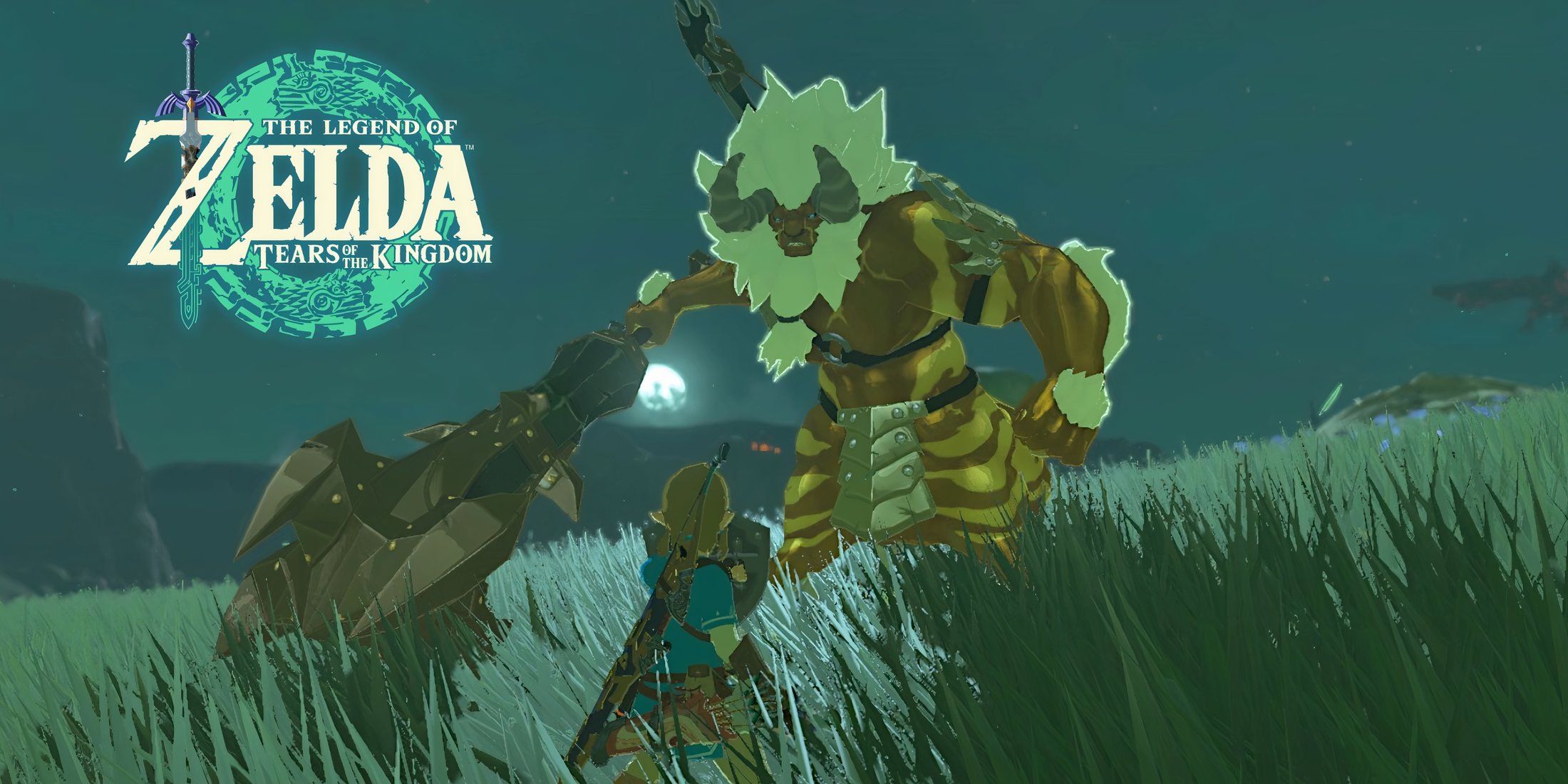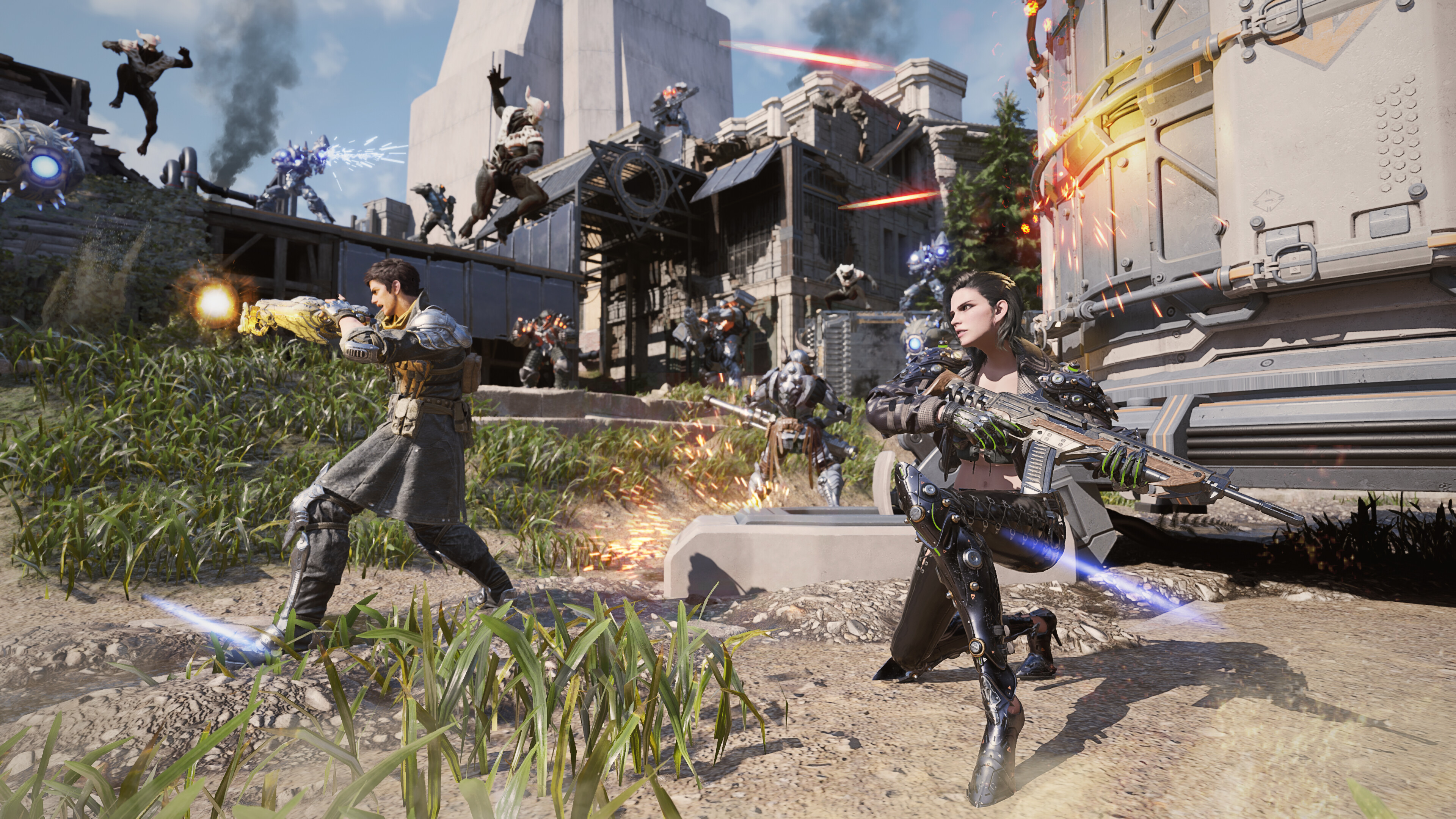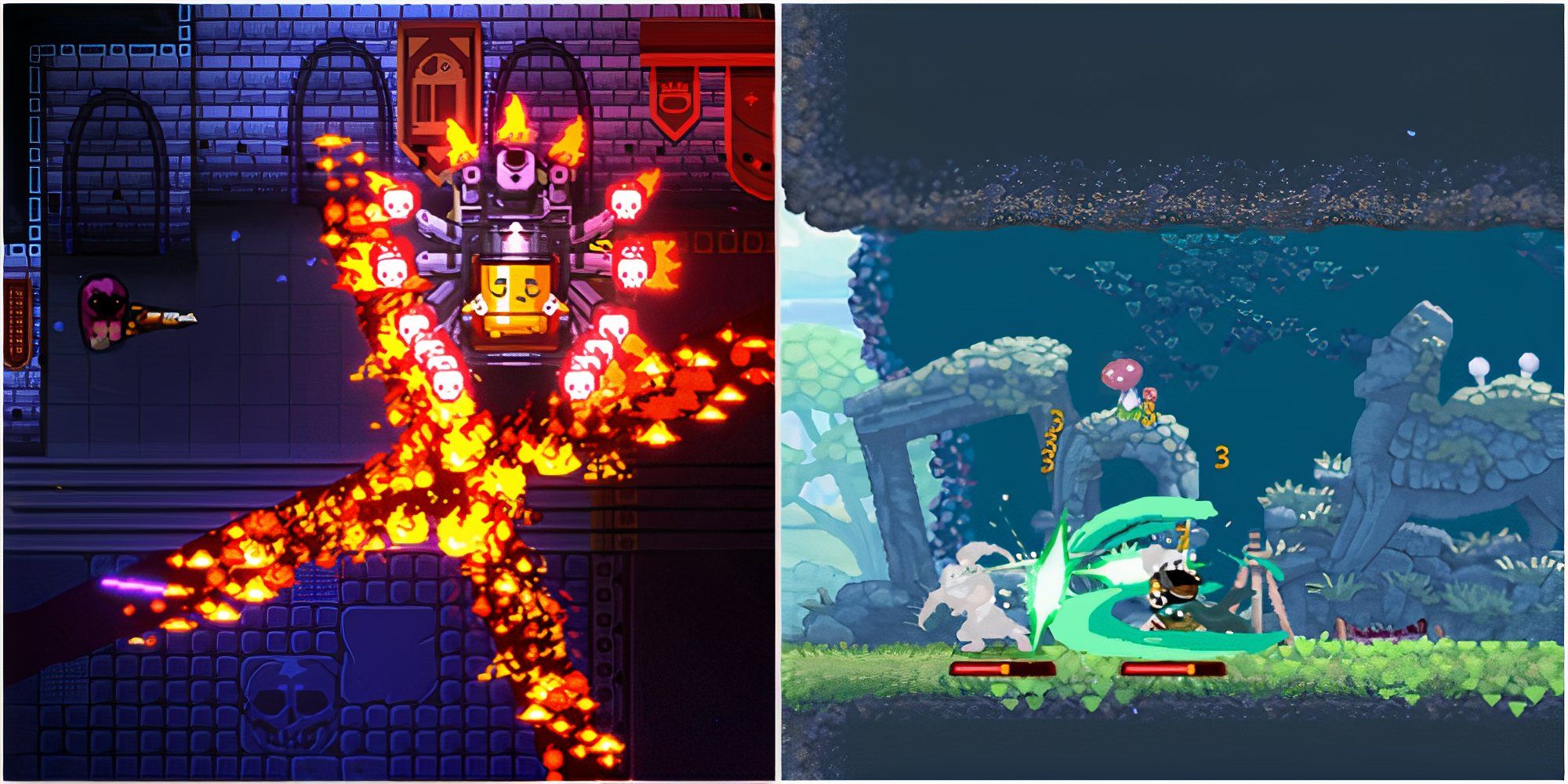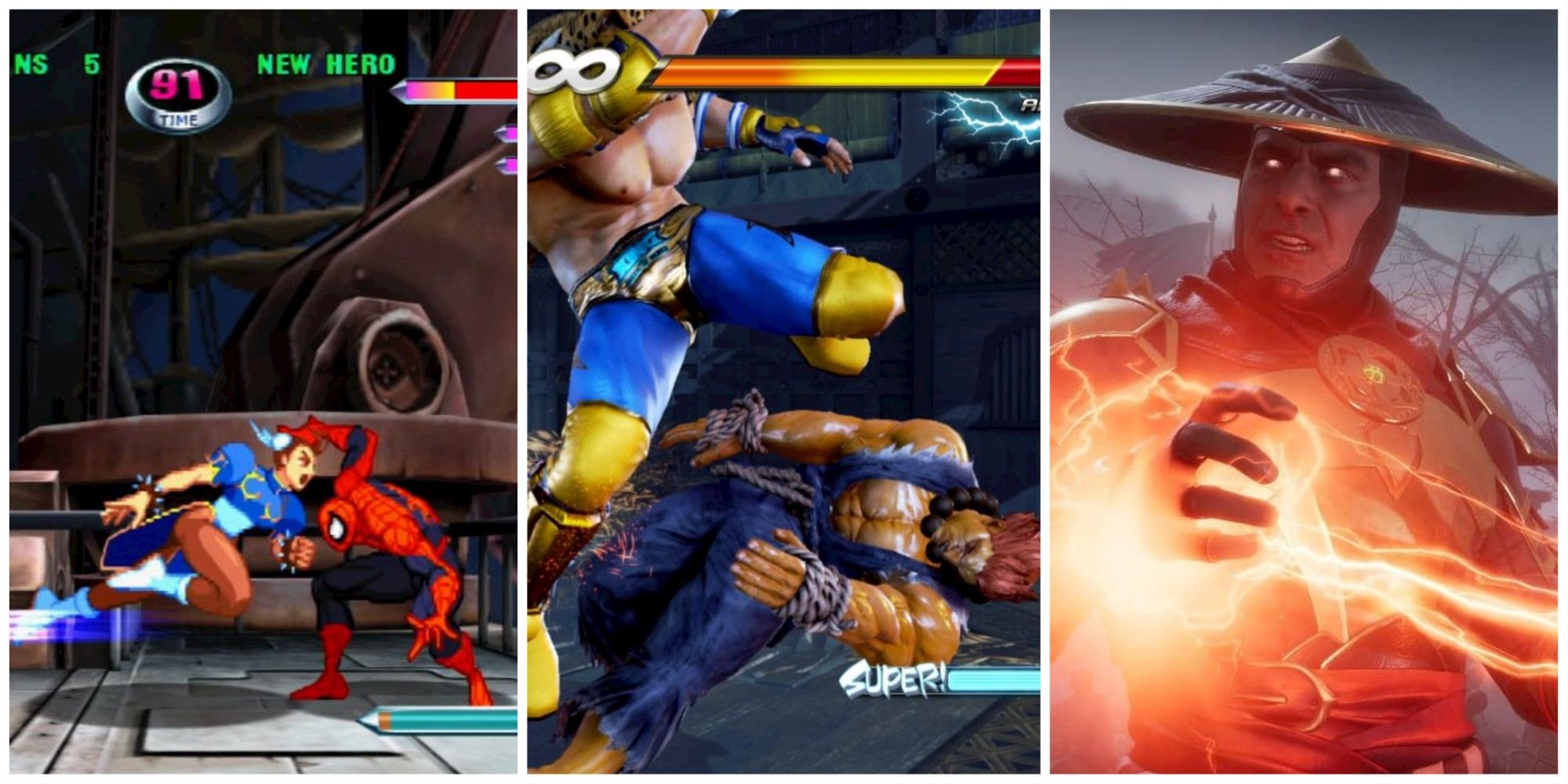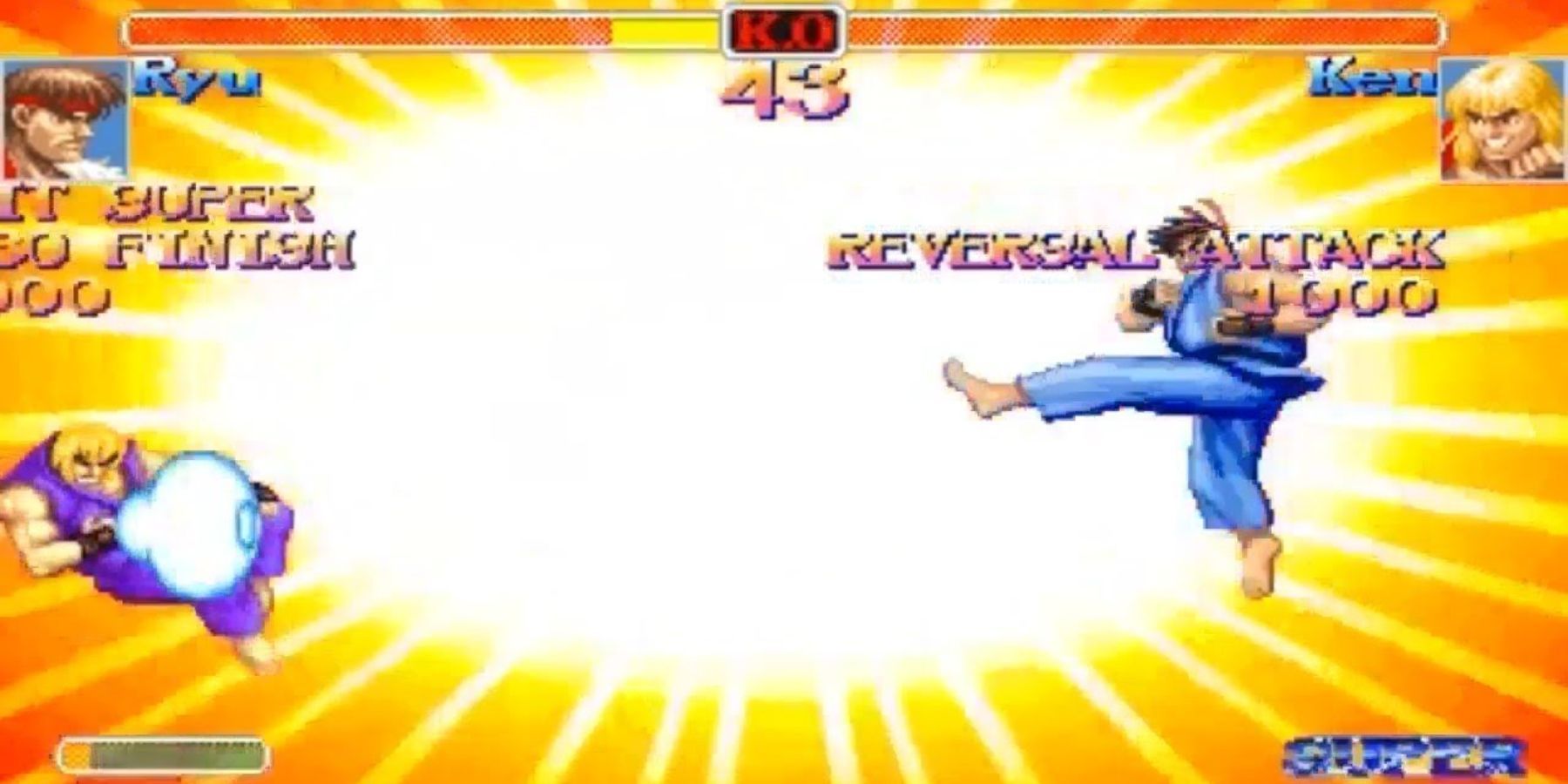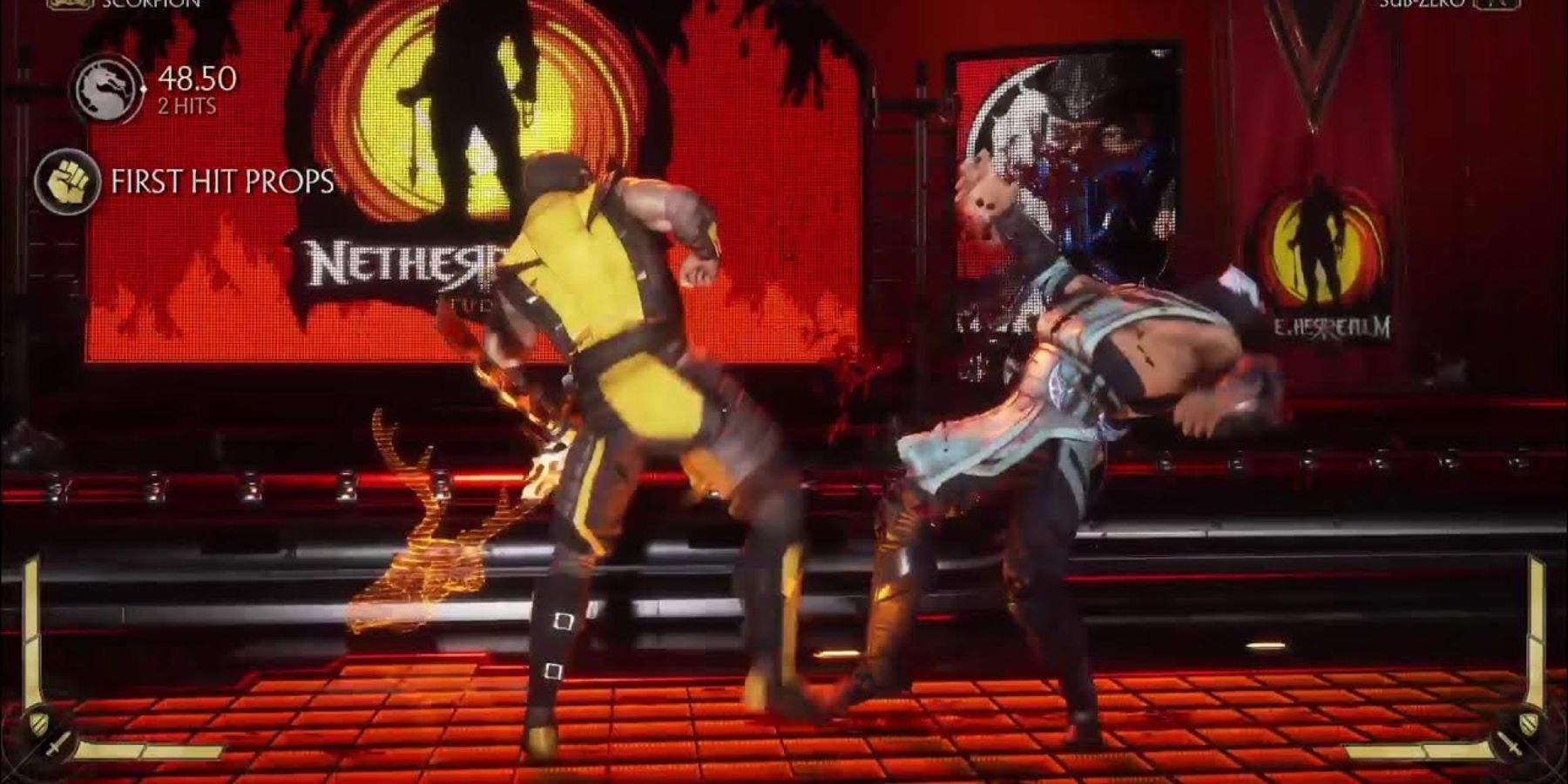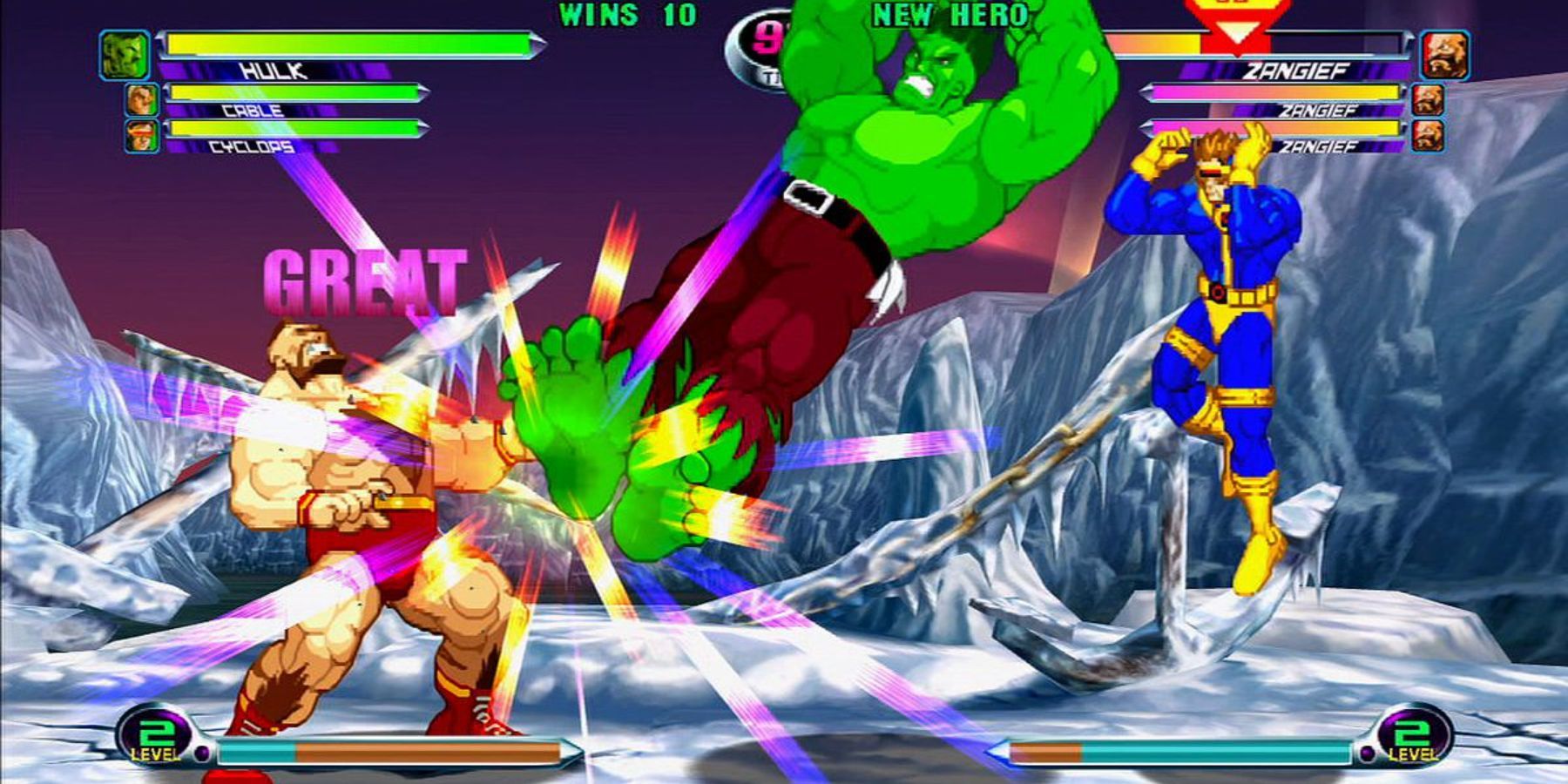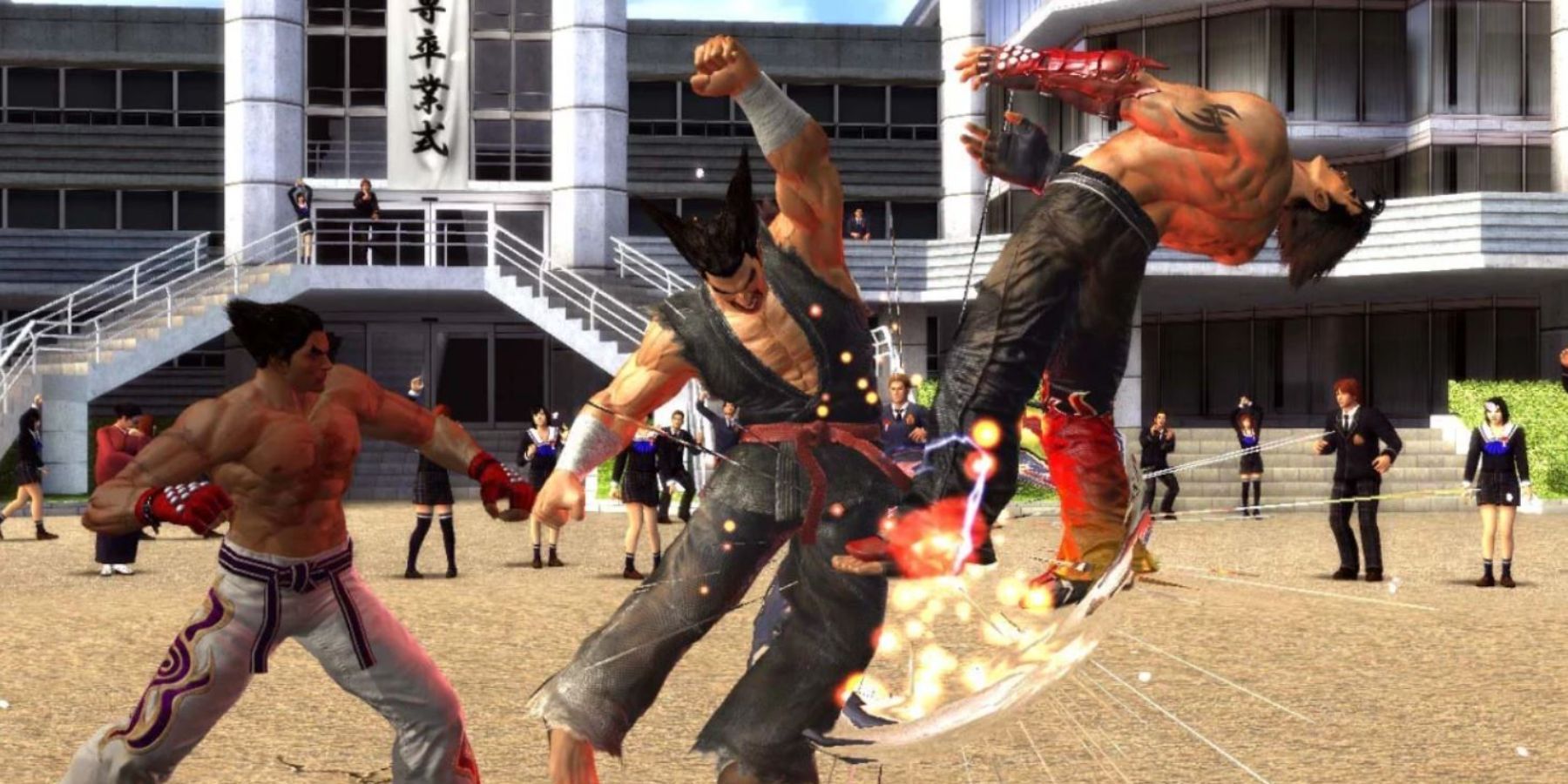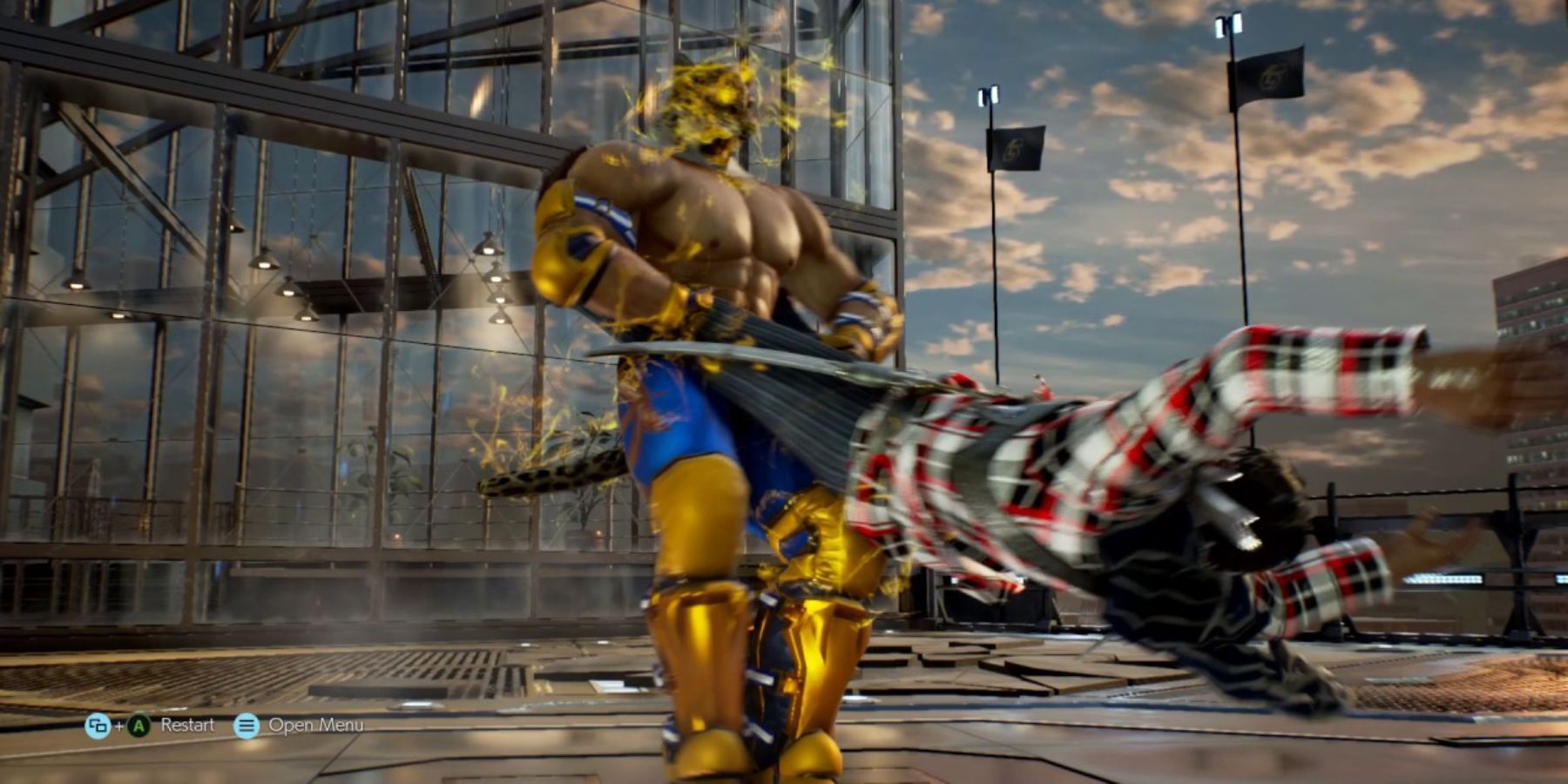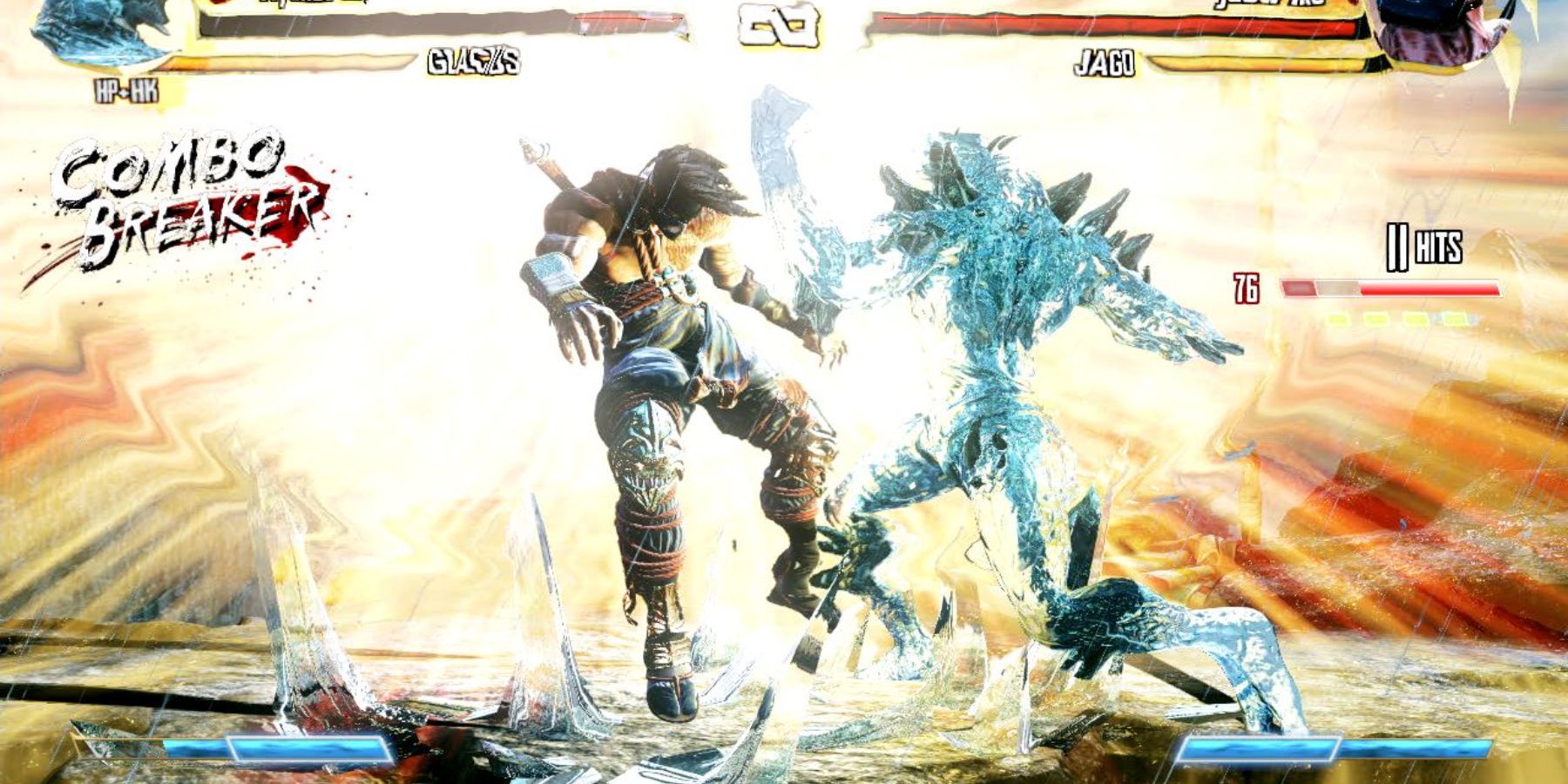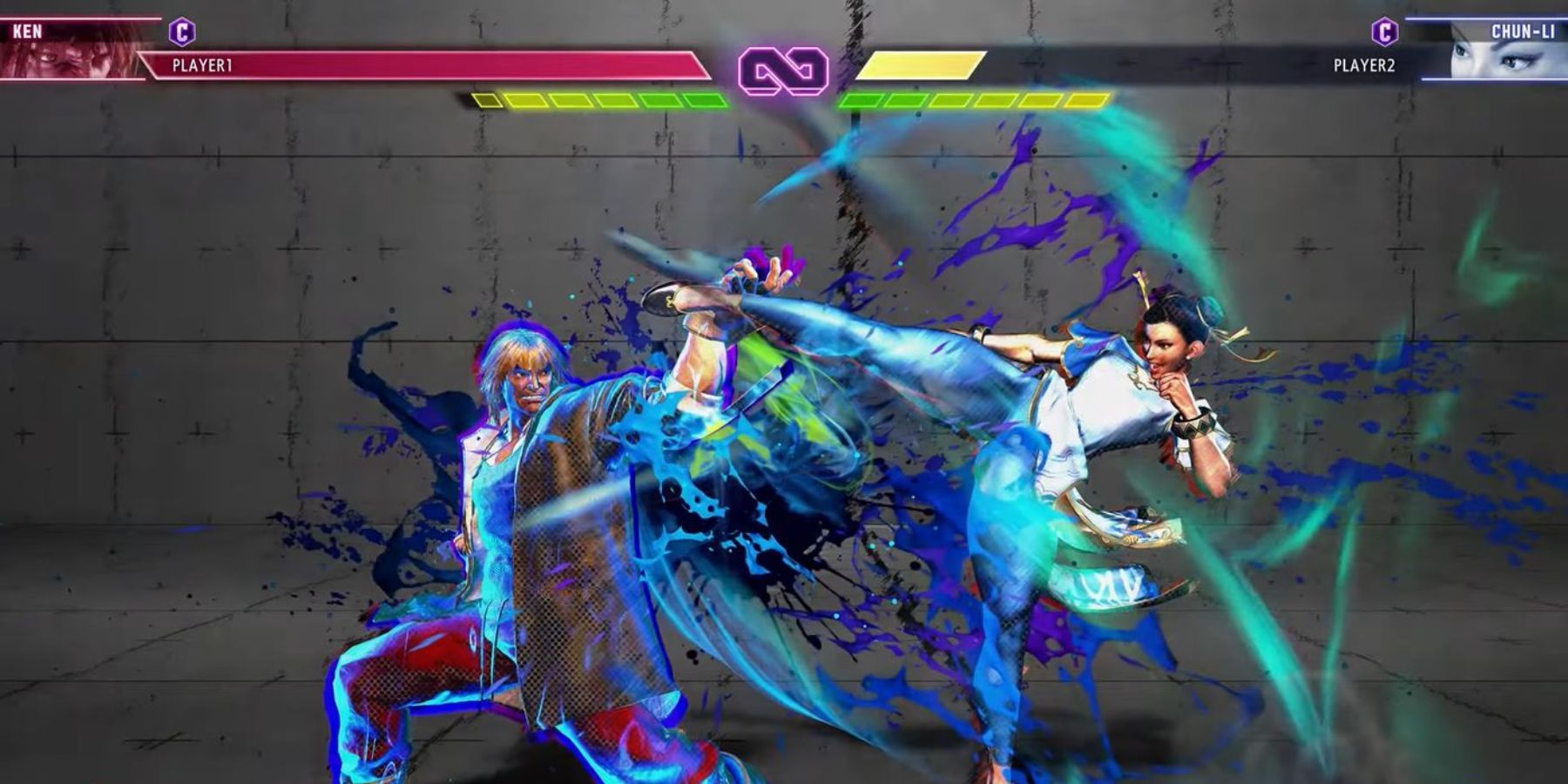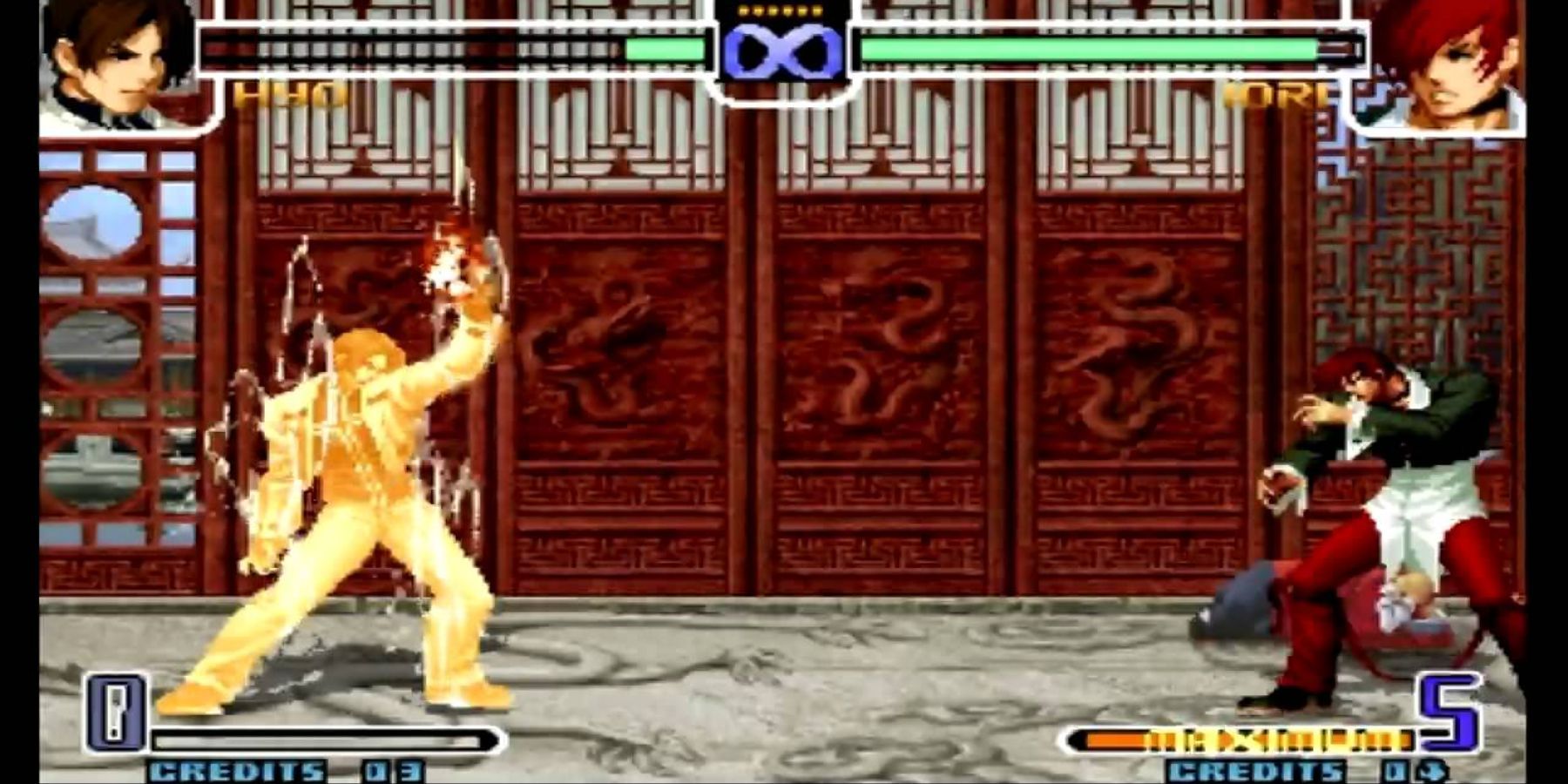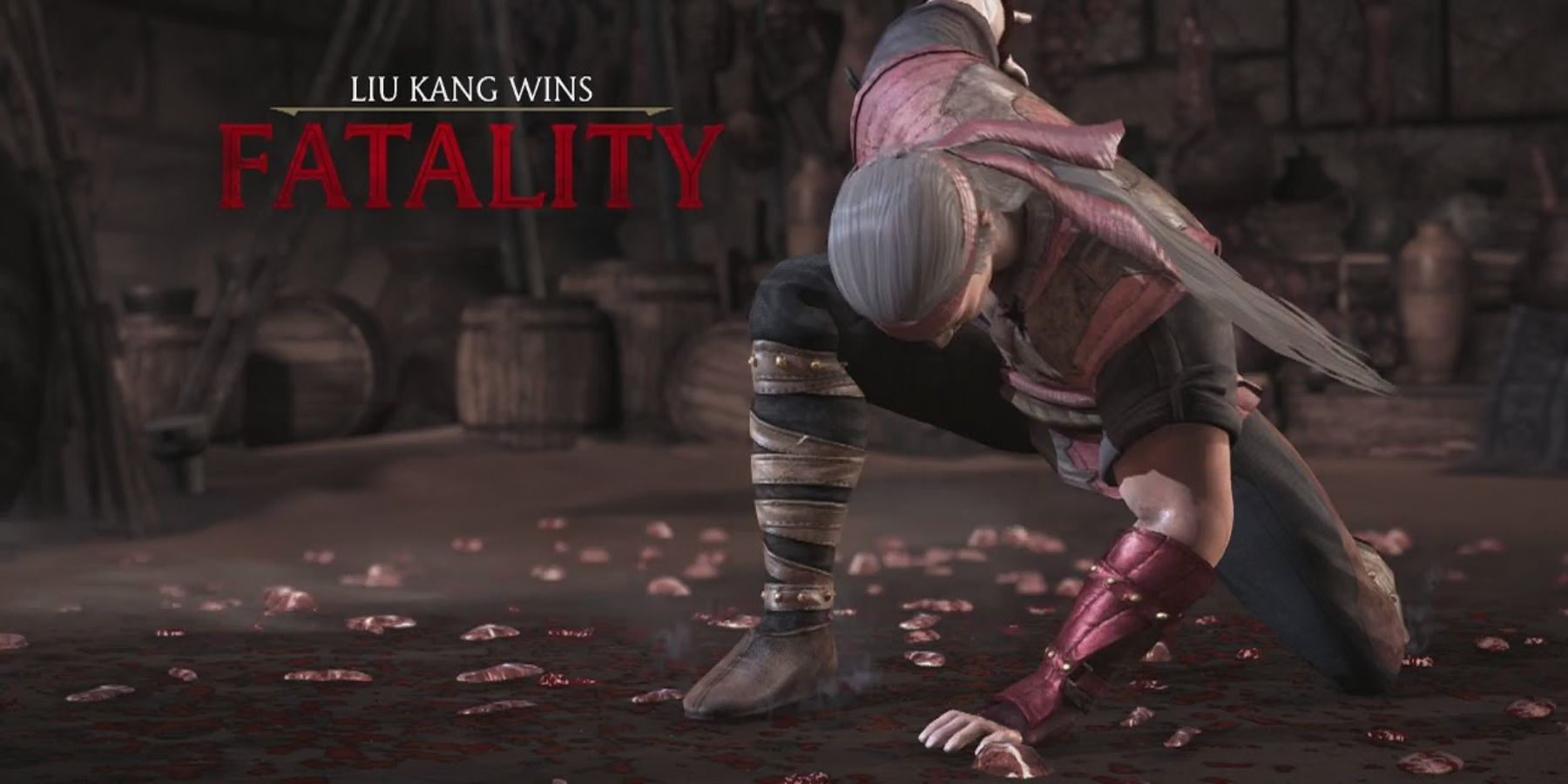Fighting games have come a long way since their inception. From two pixel sprites extending their arms and legs, trying to hit the other, developers have created clever and fun in-game mechanics to keep the pace of each round explosive and action-packed. These mechanics also made fighting games a battle of technique and timing: once the match starts, all bets are off.
But which fighting game mechanics have been stuck in the lexicon of gamers? From charging up meters for devastating attacks, to finishing off enemies with one last coup de grace, here are some game mechanics that are synonymous with fighting games.
10 Super Meter
The Super Meter has been in many fighting games and allows players to tap into their character’s highly damaging attacks. Popularized by Super Street Fighter 2 Turbo, players begin with a meter that can only be filled up by attacking their opponent.
Once the Super Meter is full, players can execute a special combination of buttons which leads to their character performing their respective Super Moves: these range from a powerful energy beam, to a multi-hitting combo that will tear chunks out of an opponent’s life bar if they get hit by it.
9 First Hit Bonus
Mortal Kombat is notorious for its violence: players are rewarded by being relentless with their combos and attacks until their opponents are bruised and bloodied. Adding to this offense-first mentality is the introduction of the First Hit Bonus in recent Mortal Kombat games.
First Hit Bonus sounds just like what it’s supposed to do: at the start of the first round, the player who strikes at their enemy first gets rewarded with one of their meters filled up. Having a meter filled up right off the bat gives that player the advantage as the fight commences.
8 Assists
One of the more technically sound offensive mechanics in fighting games, Assists provide players an additional attack in their team’s arsenal. This feature is usually seen in fighting games that allow players to have a team of two to three characters.
Each character typically has their own unique Assist move: most of them grant players additional combo extenders to ramp up the combo meter and the damage. In some games, hitting the Assist at the right moment during a combo can help them perform “touch of death” combos that take care of one of the opponent’s characters.
7 Tagging Teammates
Once fighting games allowed for players to have two or more characters to form a team, it was only a matter of time that developers made it so that said characters can tag in and out during matches. The Tag mechanic in fighting games like Tekken Tag Tournament and the Marvel vs Capcom games added a new dimension when it comes to creating the perfect team.
Players need to know which characters they picked for their team: combining their characters' strengths to pull off combos or switching in a pinch without jeopardizing their momentum adds another layer to combat.
6 Throws / Throw Breaks
Throws in fighting games added more dynamism during matches. This mechanic completed the rock-paper-scissors approach to offense: blocks beat attacks, throws beat blocks, and attacks beat throws.
Games like Street Fighter and Tekken have dedicated button prompts for grabs, and some way to counter being thrown. Giving players the ability to throw and counter throws made matches more exciting since it tested players’ reaction and awareness if their opponent is going for a throw, and if they can counter it: the mind games are especially fun to witness when a grappler battles a non-grappler.
5 Burst / Combo Breaker
As fighting games leaned more towards offense, other titles employed a way for players on the wrong side of the combo a chance to break free. This is where the Combo Breaker or Burst mechanic from titles like Killer Instinct and Guilty Gear come in.
Using the Combo Break or Burst in the middle of their combo is a strategic choice since it can stop their opponent’s momentum and throw off their rhythm. But to balance this mechanic, players only have a limited stock of Burst or Combo Breaker during matches, and if they mistime using these, opponents can punish them for even more damage.
4 Parrying
Parrying is another defensive mechanic that grants players who are knowledgeable of the fighting game they’re playing an edge over the competition. Executing a parry is difficult, since players need to time their parry button with their opponent’s attack: it takes precision and knowledge about characters’ attack timing and animations to do a successful parry, as shown by Daigo and his legendary Evo Moment.
Street FIghter 6 and the Street Fighter 3 series and the latter Tekken games included parrying in their combat mechanics, and in higher levels of gameplay, performing a parry at the right time is truly a hype moment.
3 Low-Health Comeback Moves
If worse comes to worst and the defending player is on their last legs, health bar-wise, some fighting games offer one last combat mechanic to help even the odds: the Low-Health Comeback Attacks.
Games like King of Fighters, Tekken, and Mortal Kombat have their respective Desperation Move, Rage Art/Drive, and Fatal Blow that can only be accessed when a player’s life bar reaches a threshold. Hitting an opponent with this move usually grants the player one last chance to turn the tide of the match: conversely, if the opponent blocks this attack, it usually means game over.
2 Instant Kill
An all-or-nothing finishing move, the Instant Kill mechanic is a flashy way to end a match. This typically involves a difficult button input, and if it connects with an opponent, they are treated with a unique animation, ending with the opponent knocked out.
Games like Guilty Gear and BlazBlue have such Instant Kill mechanics. During casual play, hitting these on friends is a fun exclamation point to end matches: in competitive play, getting hit with an Instant Kill is rare due to the players' impeccable reaction times.
1 Fatality
Popularized by the Mortal Kombat franchise, the Fatality mechanic is one of the best ways to end the deciding matches in fighting games. During the final round, when a player has fully depleted their opponent’s health to zero, the iconic “FINISH HIM/HER” pops on the screen: players are given a couple of seconds to input their character’s Fatality, and when done correctly, they are treated with a graphic flourish that results in the grisly end of their beaten opponent.
Each character in Mortal Kombat has their own Fatality move, and figuring out and practicing them is essential so that when players win the final round, they can send their opponents home in the most brutal way.

